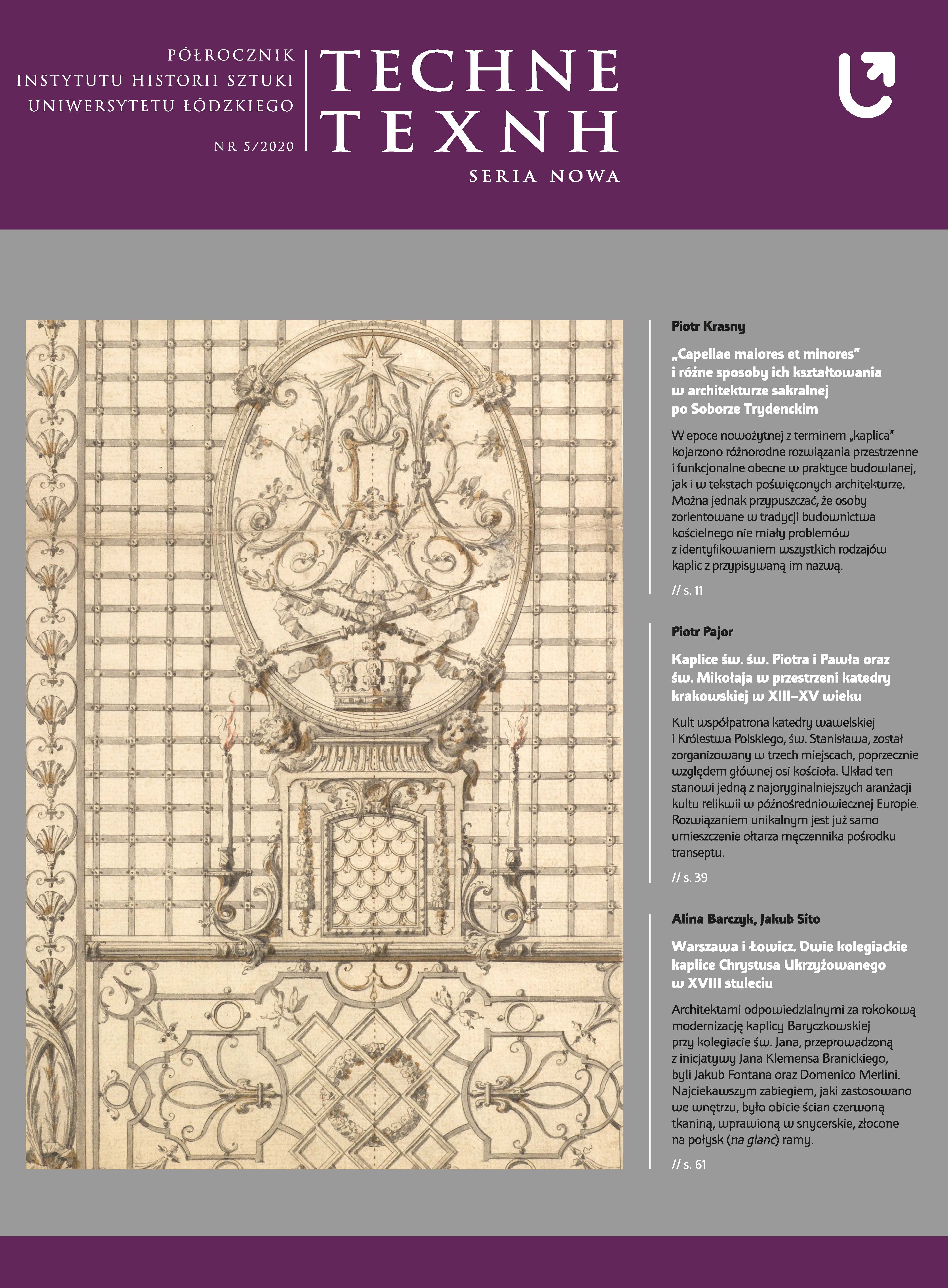Kaplice kolegiaty św. Anny w Krakowie – indywidualne fundacje pod zbiorczym nadzorem
Chapels of the collegiate church of St. Anne in Cracow – individual foundations under collective supervision
Author(s): Michał KurzejSubject(s): Fine Arts / Performing Arts
Published by: Wydawnictwo Uniwersytetu Łódzkiego
Keywords: early modern art; church; chapel; Sebastian Piskorski; Jagiellonian university
Summary/Abstract: The artistic history of the university collegiate church in Cracow, has been the subject of numerous studies. Focusing on its chapels, however, imposes a slightly different perspective, related to the issues of patronage over individual oratories and the way in which their decoration was included in the ideological and artistic program of the entire church. After adopting such perspective, the Church of St. Anna appears as an interesting contribution to the reflection on the phenomenon of collective patronage, perfectly confirming the view of Peter Hirschfeld and Michael Baxandall, according to which the term basically refers to the activities of an individual hidden behind the collective. One of the goals set by the creators of the magnificent modern church with a rich liturgical and architectural program was to achieve the greatest possible coherence of the decor, both in terms of ideology and art. The obstaclesin its achievement were often complicated ownership relations, resulting from the diversified patronage over the chapels. Cracow Church of St. Anne, erected in the years 1693–1703 under the supervision of prof. Sebastian Piskorski, is one of the rare examples where the chapels have been given a coherent content and artistic program, despite the fact that their interiors were decorated thanks to money providedby separate founders. To achieve this harmony, the inclusion of the chapels in the content program of the interior was of the utmost importance, especially due to the transept chapels. It was in one of them that the altar of the tomb of St. John Cantius had to be placed, and such a location allowed direct light to be shone on it on the anniversary of saints’ birthday. Special setting had to be provided also for the opposite chapel of St. Cross, which reminded of the saints’ passionate devotion and presented the Cross as a source of wisdom. Much attention was paid to smaller nave oratorios. There are three pairs of them, the middle of which has been distinguished by a higher dome with a lantern. The choice of patrons of the nave chapels is allegorical – the middle chapel on the Epistle side was dedicated to the Virgin Mary, and the neighboring ones – to her spouse, St. Joseph and relative, St. John the Baptist. Moreover, the John Baptist’s Oratory is adjacent to the mausoleum of John Cantius, who was born on the Midsummer Day, inheriting his name. On the other hand, the chapels on the Gospel side were dedicated to figures representing the Church of times of the New Covenant. Its first superior – St. Peter, following Christ in martyrdom, was commemorated next to the Chapel of St. Cross. The middle oratory, opposite the St.Mary’s Chapel, is dedicated to St. Catherine the virgin, and the last – St. Sebastian, the patron of Piskorski, but also a popular apostle of those suffering infectious diseases. What is very characteristic, the contribution of the benefactors of individual chapels was commemorated only in a literary way – in publications issued on the occasion of the completion of the construction of the church. There are no inscriptions relating to their benefactors or space for their epitaphs in the chapels, or at least some of them have no funeral function at all.
Journal: TECHNE. Seria Nowa
- Issue Year: 2020
- Issue No: 5
- Page Range: 117-131
- Page Count: 15
- Language: Polish

